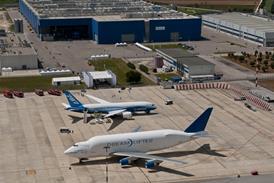Investigators have revealed that the captain of the Indonesia AirAsia Airbus A320 which crashed in the Java Sea last year failed to take decisive control of the aircraft as it stalled.
There was no input from the captain’s side-stick during the initial upset to the aircraft, when it unexpectedly rolled 54° to the left while cruising at 32,000ft en route from Surabaya to Singapore.
Although the inquiry does not explicitly state that either pilot was out of his seat at the time, it points out that the roll coincided with flight-data recorder evidence that circuit-breakers were being reset to address a rudder travel limiter fault.
Some of these circuit-breakers, notably those which would affect the autopilot, could only be reached by a crew member if they left their seat. The inquiry notes that the captain of the aircraft had previously witnessed these circuit-breakers being reset to address a similar problem three days earlier.
Resetting the circuit-breakers resulted in the autopilot disengaging and the aircraft's sudden roll. The first officer – who was flying – did not react to the unusual attitude for some 9s, but then sharply attempted to correct the roll with strong control inputs to the side-stick.
In doing so, he also pulled backwards on the side-stick, pitching the A320 into a steep climb during which the airspeed bled away and the aircraft began to stall.
Flight-data recorder information shows that there was almost no pitch or roll input from the captain’s side-stick until after the stall alarm had sounded twice.
Cockpit-voice monitoring systems “did not record any command” declaring that the captain was taking over as the flying pilot, says the National Transportation Safety Committee inquiry. But the conversations, it adds, appear to indicate that the captain “assumed the role” with no formal announcement.
“Without clear co-ordination on the role of [monitoring pilot and flying pilot], this resulted in both crew members providing separate inputs to the flight-control system,” it states.
Critically, the captain attempted to push the aircraft’s nose down with forward pitch on his side-stick – the proper response to an aerodynamic stall.
But this nose-down input was rendered ineffective because the first officer was continuing to pull rearwards on his side-stick. These opposite actions effectively cancelled one another out, because the Airbus flight-control logic acted on the sum of the two side-stick inputs.
The inquiry determined that the captain did not properly activate the priority mechanism which would have given him exclusive control of the aircraft.
This mechanism required him to push a take-over button for at least 40s, to de-activate the first officer’s side-stick. But although the flight-data recorder showed that this priority button was pushed twice – for 2s and 5s – while the aircraft was stalling, these periods were insufficient to transfer control exclusively to the captain.
Investigators have recommended that Indonesia AirAsia should “re-emphasise” the procedures for taking control of the aircraft during critical phases of flight.
Source: Cirium Dashboard























